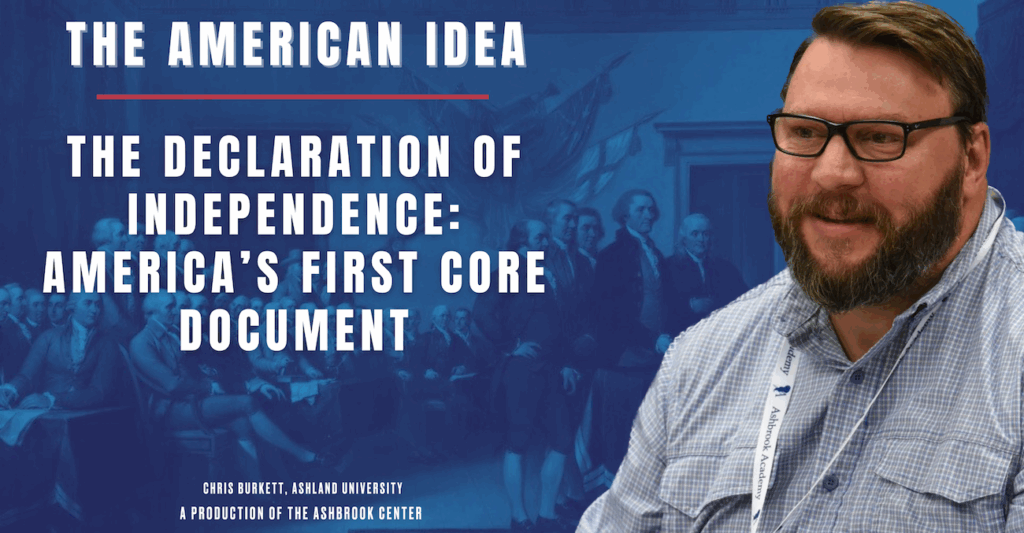The Declaration of Independence: America's First Core Document
July 2, 2025

Listen and subscribe to the podcast
Join The American Idea’s Listener Email list – get news about upcoming episodes and a chance to offer questions for them, too!
The Declaration of Independence stands as America’s first core document, establishing the fundamental principles that define what it means to be American. Rather than being united by ancestry, geography, or ethnicity, Americans are bound together by shared ideals articulated in this revolutionary text. The Declaration creates what Thomas Jefferson called the “American mind” – a set of principles written in plain, accessible language that not only spoke to Americans of 1776 but continues to define American identity for future generations.
The document’s most radical assertion was that human rights originate not from earthly rulers but from “the laws of nature and nature’s God.” This represented a revolutionary departure from centuries of accepted political thought, where rights and liberties were understood to flow from kings, nobles, or aristocratic classes. By placing the source of rights beyond human authority, the Declaration rendered these rights unalienable, meaning that they cannot be legitimately taken away by other human beings, no matter their position or power.
Central to this framework is the principle that “all men are created equal.” This equality doesn’t refer to identical abilities or characteristics, but rather to the fundamental truth that all humans possess the same unalienable rights endowed by their creator. No person, regardless of superior intelligence, strength, or wisdom, has the natural right to rule over another without consent. This equality of rights forms the foundation for legitimate government, which derives its authority solely from the consent of the governed and exists for the singular purpose of securing these natural rights, and not to glorify monarchs or enrich ruling classes.
The Declaration’s significance extends well beyond 1776, serving as the interpretive lens through which later American documents and institutions should be understood. Abraham Lincoln recognized this crucial relationship, describing the Declaration as “an apple of gold” and the Constitution as “a frame of silver” – the Constitution exists to preserve, protect, and allow the Declaration’s principles to shine through. This understanding helped resolve fundamental questions about American governance, including whether the Constitution supported or opposed slavery, by anchoring constitutional interpretation in the Declaration’s assertion of universal human equality.
The document establishes what might be called the American political formula: natural rights derived from divine or natural law, human equality in the possession of these rights, government by consent to secure these rights, and the ongoing responsibility to preserve these principles for future generations. These ideas, considered self-evident truths that reveal themselves with proper understanding, continue to serve as the foundation for American civic life and the standard by which American institutions and policies should be measured.
Sign up for Ashbrook’s free online course, The American Idea.

